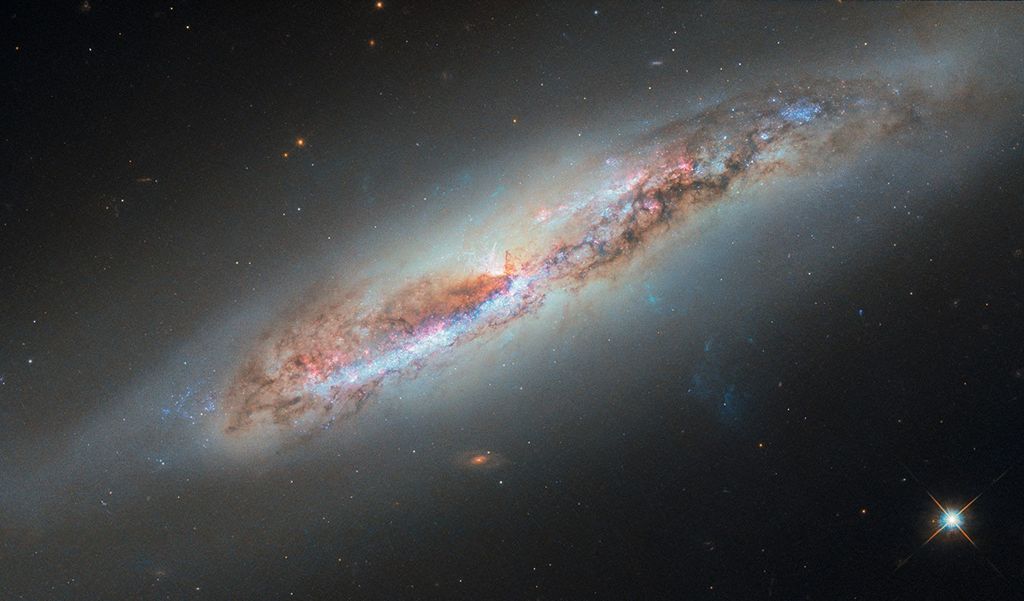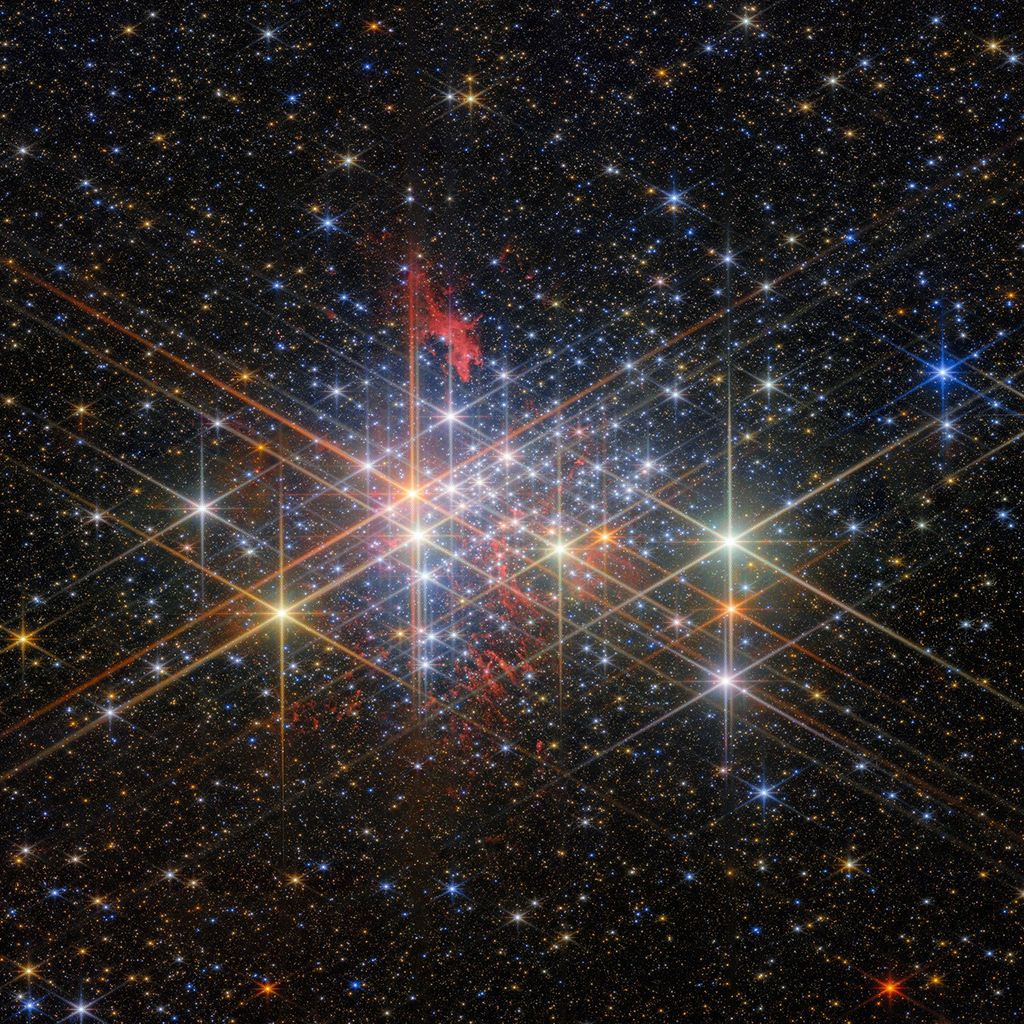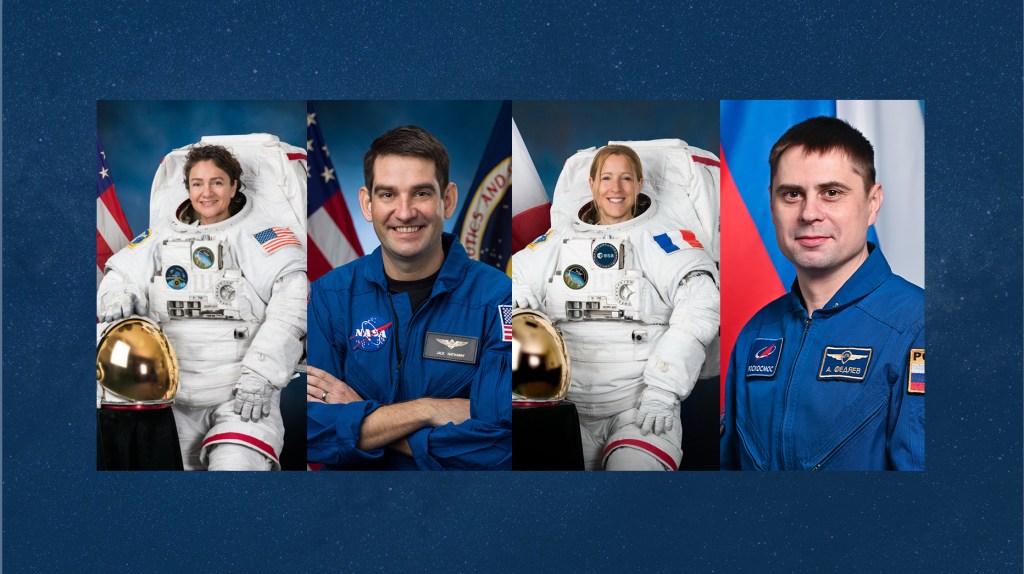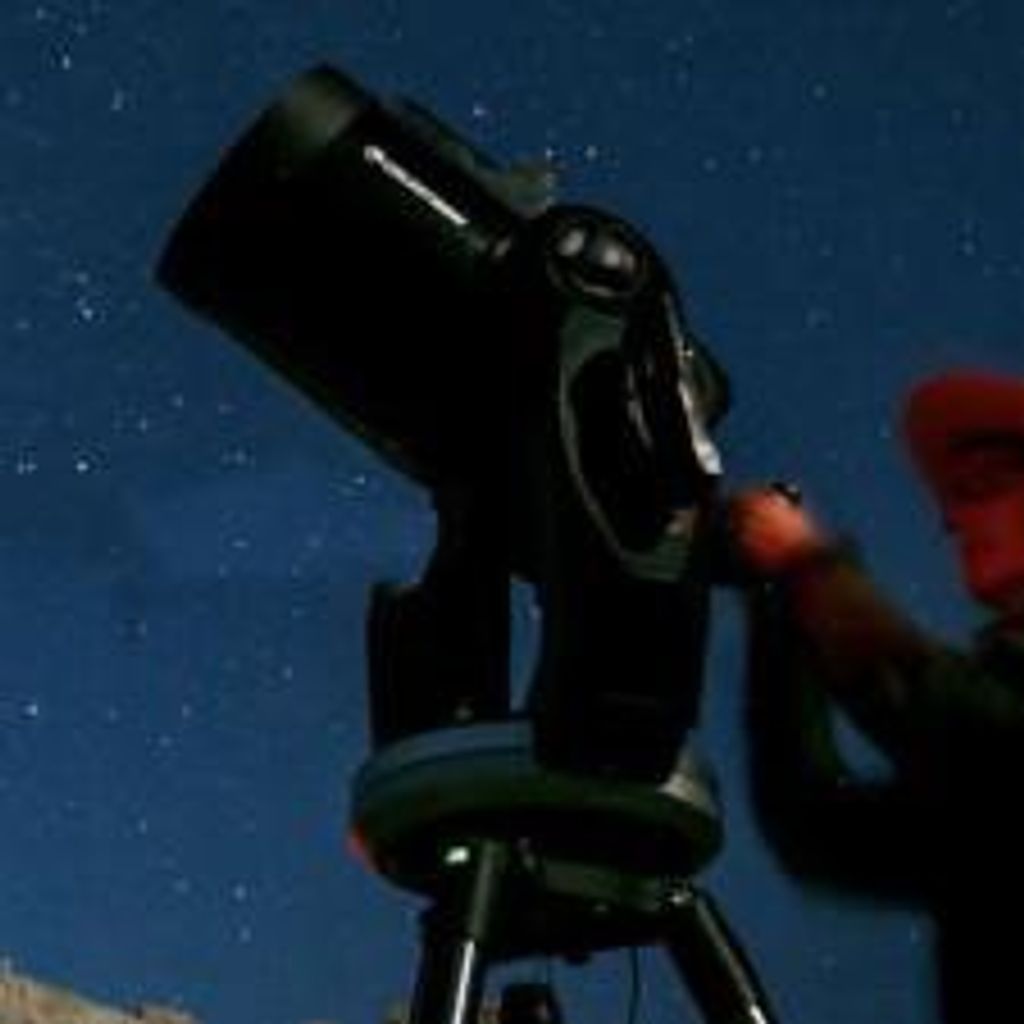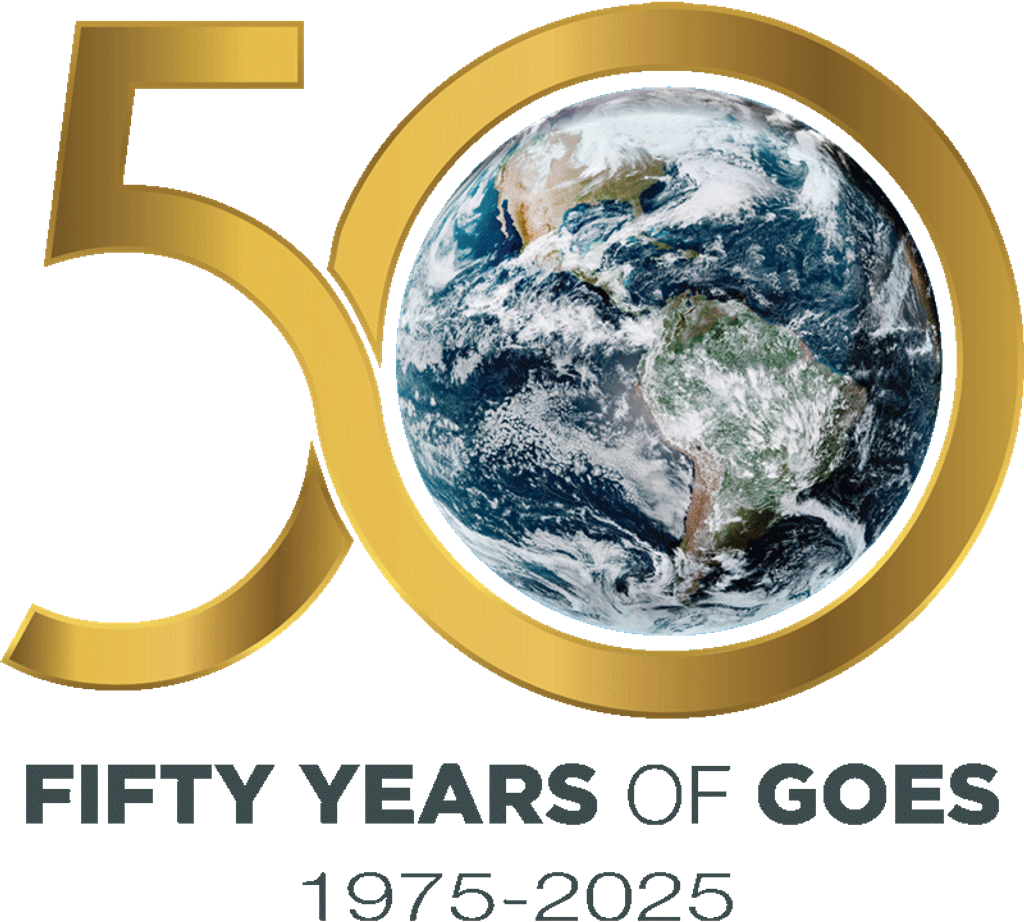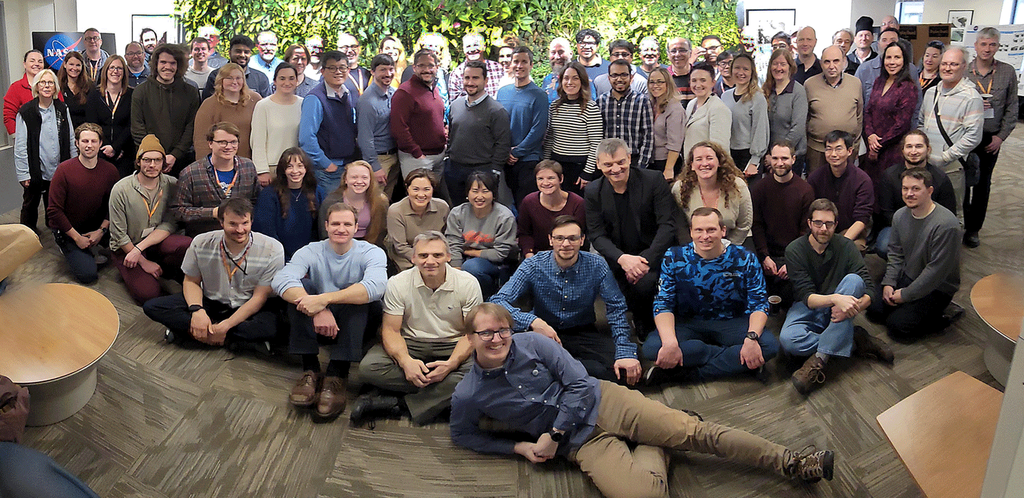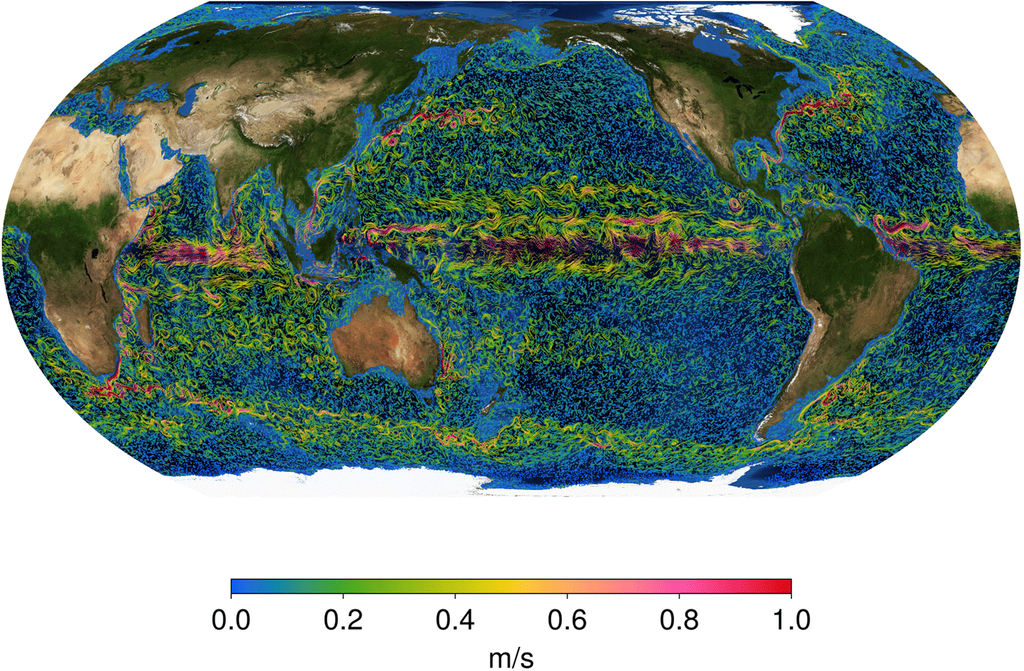1 min read
Artist’s Concept of Nearest Exoplanet to Our Solar System

This is an artist's concept of a Jupiter-mass planet orbiting the nearby star Epsilon Eridani. Located 10.5 light-years away, it is the closest known exoplanet to our solar system. The planet is in an elliptical orbit that carries it as close to the star as Earth is from the Sun, and as far from the star as Jupiter is from the Sun.
Epsilon Eridandi is a young star, only 800 million years old. It is still surrounded by a disk of dust that extends 20 billion miles from the star. The disk appears as a linear sheet of reflecting dust in this view because it is seen edge-on from the planet's orbit, which is in the same plane as the dust disk.
The planet's rings and satellites are purely hypothetical in this view, but plausible. As a gas giant, the planet is uninhabitable for life as we know it. However, any moons might have conditions suitable for life.
Astronomers determined the planet's mass and orbital tilt in 2006 by using Hubble to measure the unseen planet's gravitational pull on the star as it slowly moved across the sky. Evidence for the planet first appeared in 2000 when astronomers measured a telltale wobble in the star.
About the Object
- R.A. PositionR.A. PositionRight ascension – analogous to longitude – is one component of an object's position.03h 32m 55s.84
- Dec. PositionDec. PositionDeclination – analogous to latitude – is one component of an object's position.-09° 27' 29".7
- ConstellationConstellationOne of 88 recognized regions of the celestial sphere in which the object appears.Eridanus
- DistanceDistanceThe physical distance from Earth to the astronomical object. Distances within our solar system are usually measured in Astronomical Units (AU). Distances between stars are usually measured in light-years. Interstellar distances can also be measured in parsecs.Approximately 10.5 light-years (3.2 parsecs)
About the Data
- Data DescriptionData DescriptionProposal: A description of the observations, their scientific justification, and the links to the data available in the science archive.
Science Team: The astronomers who planned the observations and analyzed the data. "PI" refers to the Principal Investigator.This HST data was taken from the following Hubble proposals: 9167, 9347, and 9969: G.F. Benedict (University of Texas, Austin), B. McArthur (McDonald Observatory), E. Nelan (STSCI), A. Hatzes (Tautenburg Observatory, Germany), W. Cochran (University of Texas, Austin), and G. Gatewood (University of Pittsburg). The science team also includes: M. Endl and R. Wittenmyer (McDonald Observatory/University of Texas, Austin), S. Baliunas (Harvard-Smithsonian Center for Astrophysics), G. Walker and S. Yang (University of Victoria), M. Kurster (Max-Planck Institute for Astronomy, Heidelberg), S. Els (Cerro Tololo Interamerican Observatory), and D. Paulson (GSFC). - InstrumentInstrumentThe science instrument used to produce the data.HST>FGS
- Exposure DatesExposure DatesThe date(s) that the telescope made its observations and the total exposure time.2001-2003
- Object NameObject NameA name or catalog number that astronomers use to identify an astronomical object.Epsilon Eridani
- Object DescriptionObject DescriptionThe type of astronomical object.Extrasolar Planet
- Release DateOctober 9, 2006
- Science ReleaseHubble Observations Confirm that Planets Form from Disks Around Stars
- Credit
Share
Details
Claire Andreoli
NASA’s Goddard Space Flight Center
Greenbelt, Maryland
claire.andreoli@nasa.gov

